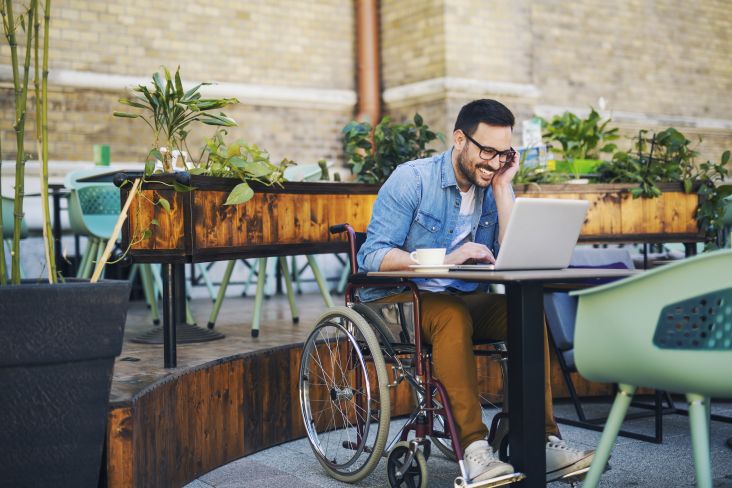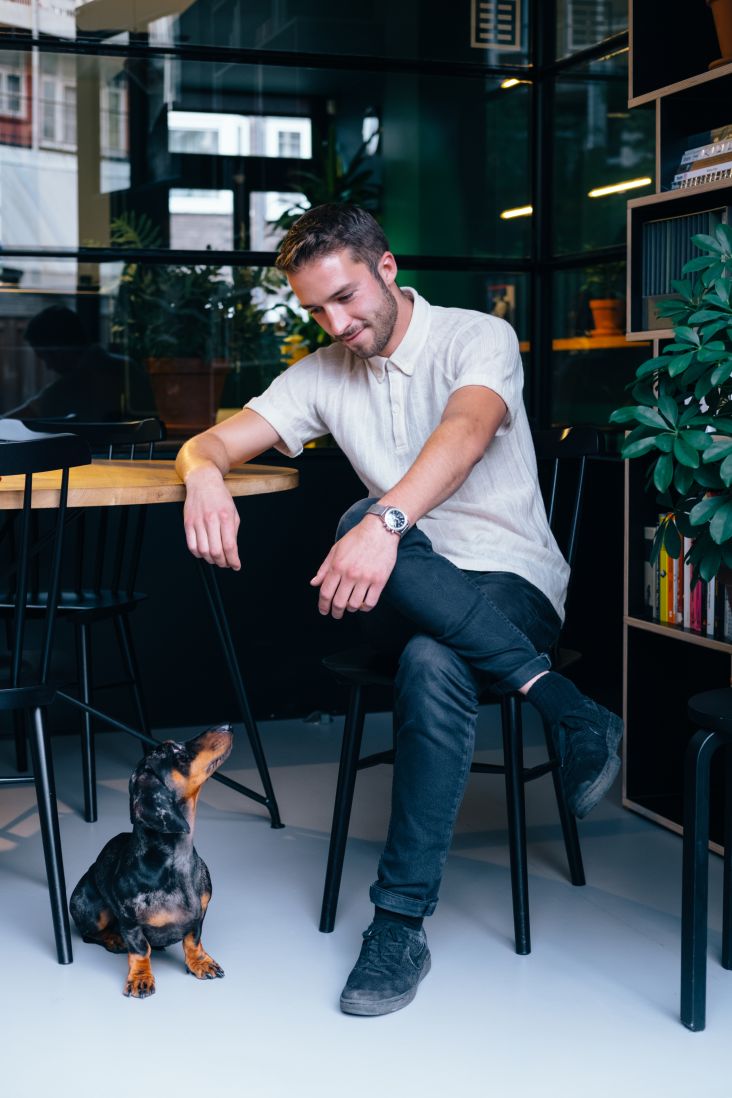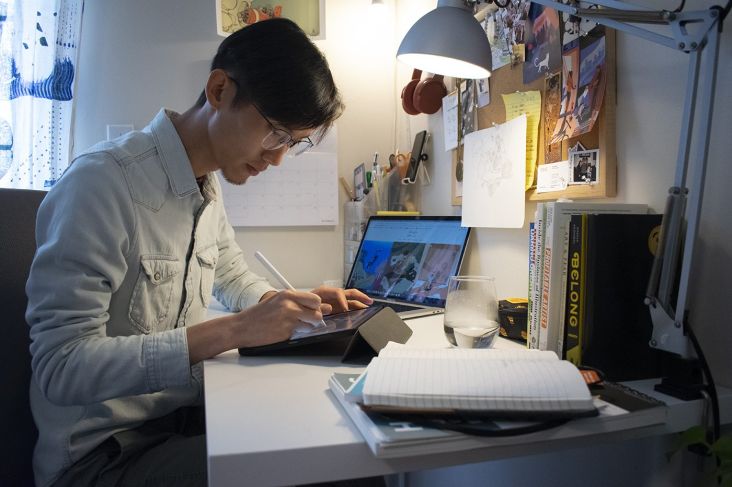Eight unexpected reasons why graphic design is a wise career choice
There are many reasons to become a graphic designer. It’s a well paid, respected profession. It’s creatively fulfilling. And when people ask you at parties: “What do you do?”, it’s kind of a cool answer to give.

Image licensed via Adobe Stock
But here at Shillington, where we’re experts in training graphic designers, we understand the profession more profoundly and intimately than that. And so we know this only really scratches the surface of why being a graphic designer is so great.
In this article, we explain that the benefits of working in graphic design are probably greater than you ever imagined, and how right now, it’s a brilliant career for creative people to pursue.
1. You get to learn problem-solving skills
The main way that graphic design differs from art is that it’s not about drawing pretty pictures, but about solving problems. So your time as a working graphic designer will primarily be spent solving problems for your client, whether they be a company, a public body, a charity or an individual.
These may range from the broad, such as how to get a specific target group to engage emotionally in a product, to the specific, such as how to get more people to buy things on a website.
In other words, at the same time as improving your skills in areas such as typography, layout, colour theory and so on, you’ll be boosting your problem-solving skills, which are skills that will be generally useful to all areas of your life.
2. It helps you to understand how a business operates
To use design to solve a company’s problems, a graphic designer needs to do extensive research and get to understand the fundamentals of how the business operates.
That may involve such activities as drilling deep into data, conducting interviews with stakeholders, organising user tests, and more.
This can often throw up insights about a business that even the highest levels of management were unaware of. It's fascinating stuff, and another wonderful string to your bow career-wise.
3. The challenges are invigorating
As a graphic designer, you’ll be tasked with having to express your ideas and vision to the client, accept criticism and feedback, and move towards a solution that both of you can be satisfied is the right one.
If being thrown in at the deep end like this sounds quite full-on, then it is. But there’s no reason to be intimidated because, with the right training, you’ll see it less like a scary prospect, and more as an exciting opportunity to build your confidence and communication skills.
4. You'll learn to be a great team player
As well as working with clients, you’ll also be working with other designers. The good news here is that, unlike some other professions, graphic designers are generally a friendly and supportive bunch. Your superiors have all been where you were and will do everything they can to guide you and help you move your skills forward.
As part of that process, as you progress from junior to middleweight to a senior graphic designer, you’ll become part of that culture yourself, and start helping, teaching and guiding the new generation. It’s a virtuous circle of mutual support that, quite honestly, is one of the nicest things about working as a graphic designer.
5. You get to be at the heart of any business
Whether you’re working for a client within a design studio, or embedded in a big company as part of their in-house design department, one thing remains constant. As a graphic designer in 2019, you’ll be considered to be at the heart of that business.
It’s not always been this way. There was a time when departments like marketing and design were seen as expendable luxuries by many companies; the first to be axed when a recession hit. In today’s digital age, though, design is seen as essential to a company’s success, and rightly so.
That means, of course, a much greater degree of job security than other professions. But more importantly, it means you’ll be awarded respect for what you do, and the benefits of that can never be underestimated.
And it’s not just about what other people think: more importantly, you’ll also respect yourself because you'll get to see the results of your work and how it positively impacts business. And you’ll be able to mentally pat yourself on the back for a job well done.
6. You'll pick up skills you never thought of
As part of your graphic design course, you’ll have studied the fundamentals of design, from the golden ratio to colour theory. But there are many more skills that you will learn as part of your day to day graphic design practice.
These will include common things like how to pitch to a client and how to write copy for websites. But as you move from project to project, you’ll also pick up skills you might never have expected. You might need to learn how to design for virtual reality, for example, how to program a robot or the basics of projection mapping.
In short, as a graphic designer, you'll never stop learning and growing. This constant stream of ‘What next?’ can be challenging, for sure. But it’ll keep your brain constantly engaged and active, continually build up your skill-set, and you’ll certainly never get bored!
7. It won’t feel like work
Friends and colleagues in other professions will tell you they routinely wake up on a workday and inwardly groan, realising that’s it’s not the weekend, and they have to go to the office. But you’re far less likely to hear that from graphic designers.
Quite simply, when you love what you do, it doesn’t feel like work. Yes, there are challenges, and yes, you’ll have bad days. But overall, you’ll look forward to going to your design studio every day, stretching your creative muscles, and make cool, new things. And who wouldn’t want that?
8. The world will be your oyster
One of the best things about being a graphic designer is that there’s a clear career progression, from junior to senior designer, and then onwards up the hierarchy through art director, creative director and senior management.
But the even better news is, that traditional career path is only one of your options. Alternatively, you can spend time learning the ropes at a design agency, and then strike out on your own, either as a freelancer or by starting your own design business.
As a freelance graphic designer, you can work from anywhere you can find an internet connection, whether that’s your home office, a co-working space, or travelling around the world as a global nomad. You can choose to work full-time, part-time, or pick up bits of freelance on the side when need cash.
And of course, you don’t have to stay working as a graphic designer. As an experienced and trained graphic designer, you'll have a set of transferrable skills that means you can easily side-step into a range of related professions, such as UX designer, motion designer or web developer, animator, film-maker and others. In short, the sky's the limit!





 by Tüpokompanii](https://www.creativeboom.com/upload/articles/58/58684538770fb5b428dc1882f7a732f153500153_732.jpg)

 using <a href="https://www.ohnotype.co/fonts/obviously" target="_blank">Obviously</a> by Oh No Type Co., Art Director, Brand & Creative—Spotify](https://www.creativeboom.com/upload/articles/6e/6ed31eddc26fa563f213fc76d6993dab9231ffe4_732.jpg)









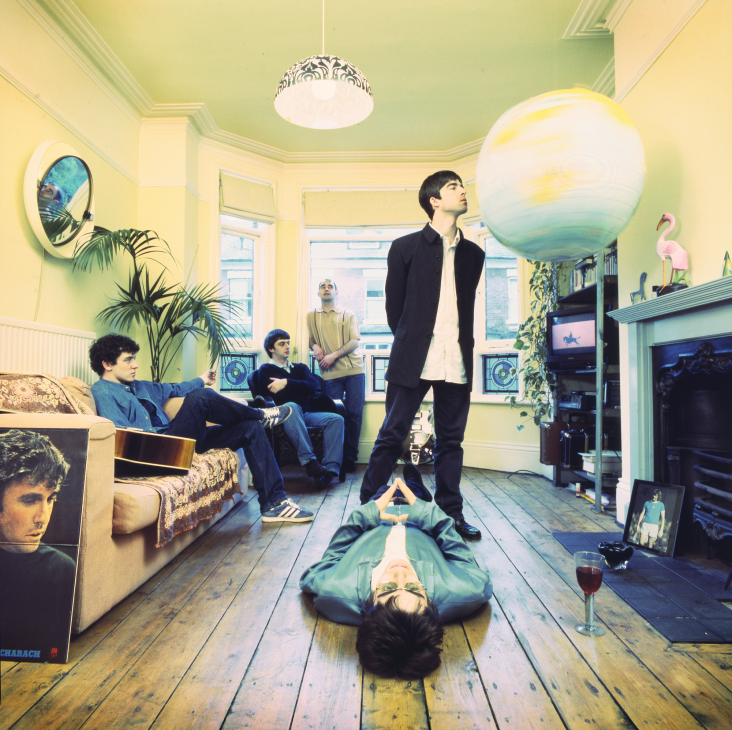


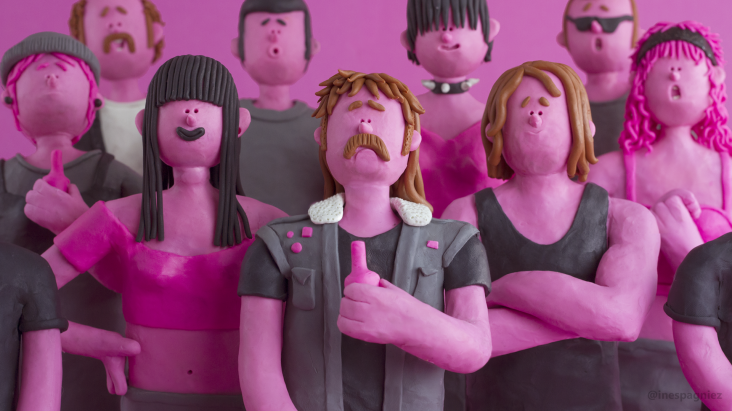
](https://www.creativeboom.com/upload/articles/af/af4d07206f762fa288220c1f480fc6345e83bc8a_732.jpg)
